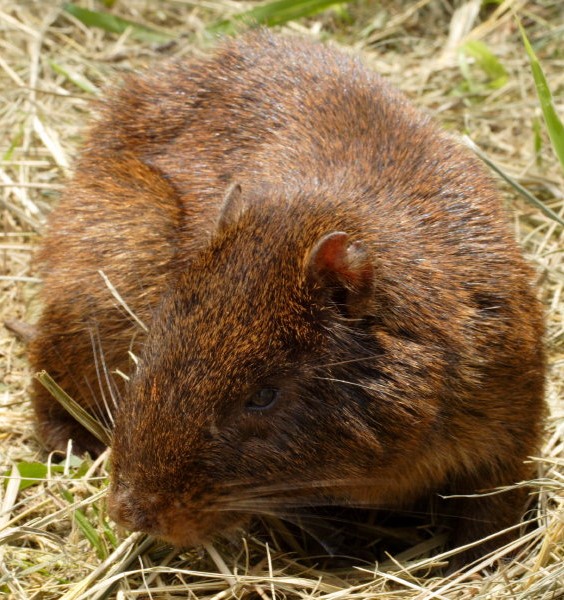
Jamaican Hutia. Photo credit: Ricardo Miller
The Jamaican Hutia (Geocapromys brownii) goes by a few local names, such as the Coney or Grazie. The species is endemic to Jamaica and was moved from Vulnerable to Endangered on the IUCN Red List. It is a rabbit-sized nocturnal rodent with dark brown through to reddish brown fur and is the only remaining extant non-flying mammal on the island.
As it the case for many species, there are likely to be multiple threats, some of which are poorly understood. It is thought that ongoing human-induced habitat loss and degradation across the island, as well as hunting, continue to be major threats to this species. Predation by introduced dogs, cats, and mongoose may also pose a risk.
PhD student
Jennifer Panitz started on the London DTP , selecting the project this year.

Jennifer Panitz
“I am a PhD student at the ZSL Institute of Zoology, University College London, and the Natural History Museum London. My project revolves around the Jamaican Coney (Geocapromys brownii) and the sustainability of human-coney co-existence in Jamaica. Previously I completed an MSc in biodiversity, evolution, and conservation at Middlesex University with a project focusing on microplastics in aquatic snails. I also have a PGCert in Applied Meteorology from the University of Reading. Prior to that I worked as an epidemiologist in the COVID-19 response at Public Health England. I have conducted various research projects in Germany, the United States, and Canada.
I am a proponent of interdisciplinary and collaborative methods and am excited to draw on ecological, anthropological, and genomic approaches for my PhD research. I hope to generate data that will help inform Jamaican Coney conservation and preserve small mammal diversity.”
The project
Along with the other institutions, Durrell Wildlife Conservation Trust is a CASE partner on the PhD project.
The PhD research will use multiple approaches to answer key questions about the ecology and conservation needs for the species, including:
(1) targeted studies of coney ecology, including how hutias utilise both forest and agricultural land in human-occupied landscapes
(2) ancient DNA work to understand the changing genetic status of coney populations through time, to assess the impact of local human pressures such as hunting over the past century
(3) community-based research to understand people’s knowledge and attitudes about local coney populations, such as the cultural and financial significance of natural resources, in particular, of coney hunting. These will be used to investigate issues around alleviating human-wildlife conflict associated with coneys as crop pests, and with scope to develop a wider-scale interview survey to help understand the species’ distribution and status across different parts of Jamaica through the use of Local Ecological Knowledge.
One of the likely field sites will be in the Blue and John Crow Mountain National Park in Eastern Jamaica.
We would like to say a huge thank you to our SMSG core funders for 2024- Re:wild and Durrell Wildlife Conservation Trust.